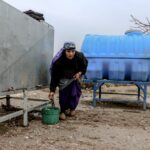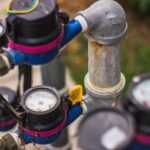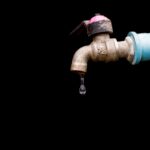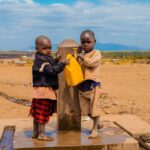Water Access and Gender Inequality in West Africa

In many parts of West Africa, water access and gender inequality are closely connected. Water is a daily necessity for every household, yet the responsibility of collecting it often falls on women and girls. This task is time-consuming and physically demanding, and it keeps many women and girls from pursuing education, income-generating work, or other opportunities.
Gender inequality is deeply embedded in traditional roles that assign household tasks, like water collection, to females, placing an unequal burden on them. In this article, we’ll explore the relationship between limited water access and gender inequality in West Africa, looking at how this issue impacts the lives of women and girls and contributes to wider social challenges.
The Role of Women in Water Collection
In West African communities, women and girls are often the ones responsible for gathering water each day. In areas where water sources are far from home, they may walk for miles, carrying heavy containers to bring back enough for their families’ needs. This daily routine, often lasting hours, can lead to physical exhaustion and even health problems over time.
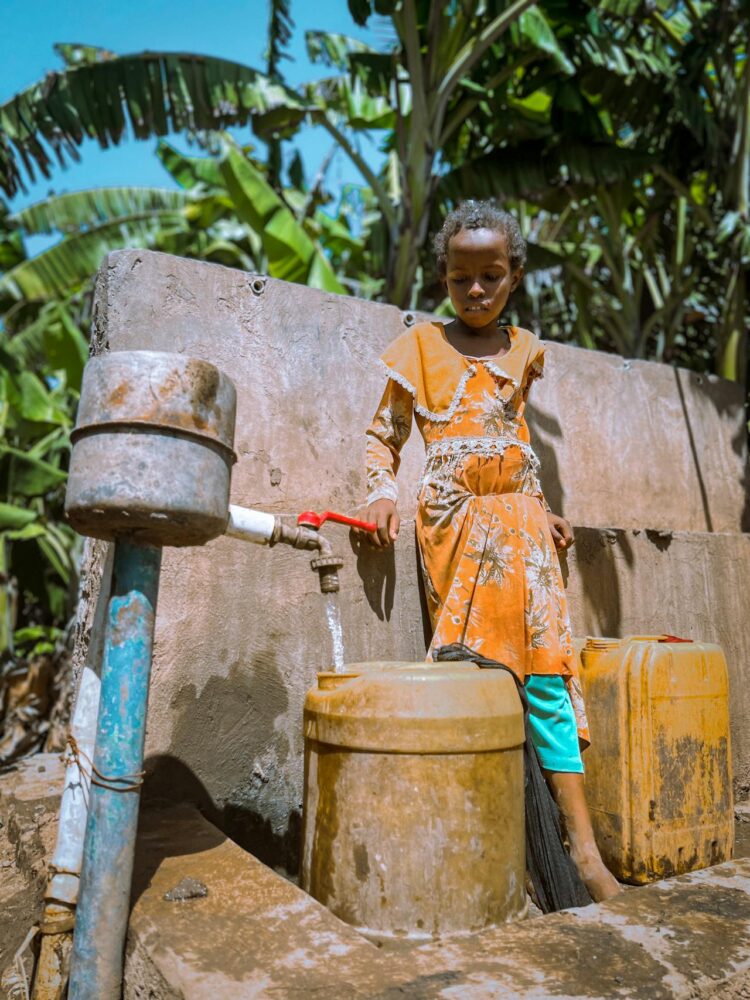
In many cases, girls as young as seven or eight are tasked with this responsibility, missing out on opportunities that boys might enjoy.
The time spent collecting water has a lasting impact on women’s and girls’ lives. It limits their ability to participate in activities like school, work, or even community events, reinforcing traditional roles and keeping them from pursuing personal and economic growth. For many, water collection is a daily priority that leaves little time or energy for anything else.
Effects on Education for Girls
The impact of water collection duties on girls’ education is significant. For young girls in particular, time spent fetching water directly competes with their ability to attend school. Instead of learning, they are spending hours walking to and from water sources, often in challenging conditions. As a result, many girls in rural areas either attend school irregularly or drop out altogether.
This lack of education has long-term effects. Without schooling, girls miss out on essential skills, reducing their chances of securing good jobs or gaining economic independence. The cycle of inequality continues as these girls grow up and often pass the same responsibilities on to their daughters. However, in communities where water access has improved, school attendance rates for girls have risen, showing that solutions to water access can make a real difference in breaking this cycle.
Impact on Health and Well-being
Limited access to clean water poses serious health risks for women and girls in West Africa. Women who are responsible for collecting water often drink from sources that are contaminated, exposing them to waterborne diseases like cholera, typhoid, and dysentery. These illnesses are common in areas where clean water is scarce and sanitation is poor, and they can lead to chronic health issues or even death.
Additionally, women’s specific health needs, such as maternal care, are affected by water scarcity. During pregnancy and childbirth, clean water is essential for both the mother and baby’s health. Without it, there is a higher risk of infection, which can have lasting impacts on maternal and infant mortality rates. Women also face challenges related to menstrual hygiene when clean water is limited, impacting their dignity and well-being.
In communities with reliable access to clean water, health outcomes improve significantly. Women are healthier, and they spend less time treating waterborne illnesses, freeing them up to focus on other areas of their lives.
Economic Consequences of Gendered Water Roles
The daily task of collecting water not only limits educational opportunities but also restricts women’s ability to engage in income-generating activities. In West African communities, many women have the potential to contribute to their local economies through farming, small businesses, or artisan work. However, the time spent on water collection takes away from these opportunities, trapping families in a cycle of poverty.
Economic empowerment for women has been shown to benefit whole communities. When women can earn an income, they reinvest in their families and local economies. Improved water access frees up their time, allowing them to start businesses, grow crops, and participate in local markets. Some communities have witnessed positive economic changes when water sources are brought closer to home, as more women can join the workforce and contribute to community development.
Water, Sanitation, and Hygiene (WASH) and Gender
Water, sanitation, and hygiene (WASH) programs are crucial to addressing gender inequality tied to water access. Safe sanitation facilities are often lacking in rural schools and public spaces, which disproportionately affects women and girls. Without access to clean and private facilities, many girls avoid going to school, particularly during menstruation.
Integrating gender-sensitive approaches into WASH initiatives can help address these issues. For instance, building separate, private sanitation facilities for females in schools and public areas encourages school attendance and supports women’s participation in community activities. Additionally, education on hygiene practices and safe water use empowers women and girls to make informed health decisions.
Cultural and Social Barriers
Cultural norms in West African communities often reinforce the idea that water collection is a woman’s duty, creating additional barriers to gender equality. In many areas, men’s roles are viewed as external or income-generating, while women are expected to handle domestic tasks, including water collection. These social expectations keep women tied to household responsibilities and limit their opportunities for personal growth and community participation.
Challenging these norms can be difficult, as they are rooted in long-standing traditions. However, increasing awareness about the negative effects of gendered water roles is an important step. Community programs that involve men in discussions around water access and its impact on women’s lives can help shift attitudes and support a more balanced distribution of responsibilities. Breaking down these cultural barriers is key to ensuring that water access improvements lead to real change in gender equality.
Efforts to Address Water Access and Gender Inequality
Numerous initiatives are actively working to improve water access and reduce gender disparities across West Africa. Local governments, non-governmental organizations, and international agencies have recognized the need for gender-sensitive water solutions. These efforts often focus on building reliable water sources close to communities, reducing the burden on women and girls.
One organization making a difference is AquaMaya, which is dedicated to providing sustainable water solutions that empower women and girls. It is important to not only improve water access but also engage women in leadership roles, involving them in the planning and management of water resources. This approach ensures that the solutions are practical and that women’s voices are heard.
When women are part of decision-making processes around water, the results are more sustainable and gender-inclusive. Such efforts help ensure that water access initiatives are long-lasting and truly beneficial to those most affected, contributing to a future where women have greater opportunities and equality.
Conclusion
Water access is not just a basic necessity; it’s a foundation for health, opportunity, and equality. In West Africa, where millions still struggle for reliable, clean water, the burden of this scarcity falls most heavily on women and girls. This daily task of fetching water impacts almost every area of their lives—from health and education to economic freedom and personal safety. By limiting their time, potential, and access to resources, water scarcity reinforces gender inequality and holds back entire communities.
The role of women in water collection is often undervalued, even though it’s central to the well-being of families and communities. Every hour spent walking long distances to fetch water is an hour taken away from schooling, income generation, or community participation. For young girls, this means missing critical years of education, reducing their future opportunities, and perpetuating cycles of poverty. When they miss school regularly or drop out altogether, their chances of economic independence shrink, trapping them in roles that are passed down generation after generation.
The health risks that come with water scarcity further highlight the urgent need for change. Women and girls are often forced to collect water from sources that are polluted or unreliable, exposing themselves to serious diseases. Without clean water, basic hygiene and maternal care are difficult, which increases health risks for mothers and children alike. Access to clean water improves health for everyone in a community, but it’s especially transformative for women, who can focus on caring for their families, earning a living, and participating in their communities when they are not constantly battling waterborne illnesses.
Beyond health and education, economic empowerment is also tied to water access. In communities where women are freed from the daily task of water collection, they can engage in income-generating activities that benefit entire families and, by extension, their communities. Economic participation by women is proven to strengthen economies, increase household incomes, and lift people out of poverty. Thus, addressing water access is more than just a humanitarian effort; it is a step towards economic progress and stability for the entire region.
Efforts to address these issues are gaining traction, as local and international organizations work together to develop sustainable water solutions. Programs that prioritize the needs of women and girls are not only improving access to water but also promoting gender equity. AquaMaya’s work emphasizes sustainability and community involvement, with room for women’s leadership in water management. By involving women in the planning, management, and maintenance of water resources, they ensure that solutions are both effective and enduring. Women are often best equipped to identify the needs and limitations of their communities, and their inclusion makes projects more relevant and sustainable.
For real change to occur, water access projects must continue to address the unique challenges faced by women. This means integrating gender-sensitive approaches into water, sanitation, and hygiene (WASH) initiatives, building private sanitation facilities, and providing hygiene education. It also requires engaging communities to challenge traditional roles and promote more balanced responsibilities for water collection and management. Changing cultural norms takes time, but when communities come together to discuss and address these issues, progress is possible.
In the end, improving water access in West Africa will uplift not only women and girls but entire communities. It will unlock educational opportunities, improve health, and foster economic growth, bringing a future where water access is no longer a barrier but a bridge to opportunity. As organizations like AquaMaya continue their work, there is hope for a West Africa where every person, regardless of gender, has access to clean, reliable water. This vision is possible with commitment, collaboration, and continued investment in sustainable water solutions that recognize and address gender inequality as a core issue.
By prioritizing water access and gender equality together, West Africa can take a critical step towards a brighter, healthier, and more inclusive future.
Sources:
- https://www.unicef.org/wca/press-releases/women-and-girls-bear-brunt-water-and-sanitation-crisis-new-unicef-who-report
- https://www.unicef.org/gender-equality
- Kayser GL, Rao N, Jose R, Raj A. Water, sanitation and hygiene: measuring gender equality and empowerment. Bull World Health Organ. 2019 Jun 1;97(6):438-440. doi: 10.2471/BLT.18.223305. Epub 2019 May 14. PMID: 31210683; PMCID: PMC6560376. https://pmc.ncbi.nlm.nih.gov/articles/PMC6560376/
- https://unu.edu/article/gender-blind-spots-water-sector
- https://www.unicef.org/documents/gender-responsive-water-sanitation-and-hygiene-key-elements-effective-wash-programming
- https://www.sida.se/en/about-sida/publications/gender-equality-and-water-sanitation-and-hygiene



